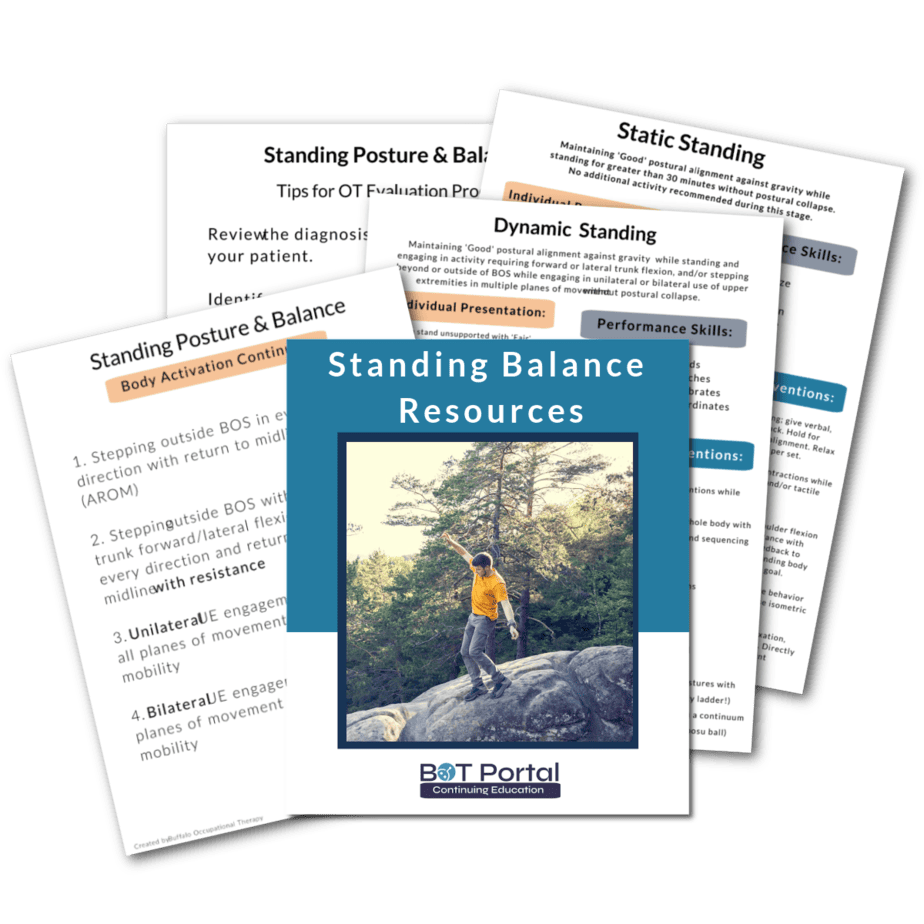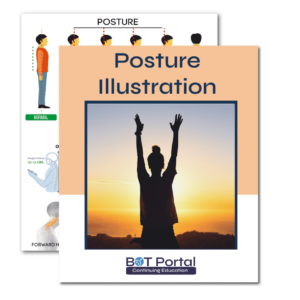Description
Standing Balance Resources
Note: These are ideas to inform daily practice. Many research-supported intervention trajectories are shown to promote remediation, and everyone is different! Do your research! This is merely a tool in your toolkit. 🙂
In occupational therapy, educating individuals on balance and posture, including the concepts of dynamic versus static balance, is essential for optimizing occupational performance and promoting overall well-being. Balance and posture are fundamental components of everyday activities, influencing the ability to perform tasks safely, efficiently, and with confidence. By understanding the importance of balance and posture in occupational performance, individuals can improve their ability to engage in meaningful activities, maintain independence, and prevent injuries.
Dynamic balance refers to the ability to maintain stability and control while in motion or transitioning between positions, such as walking, reaching, or bending. It is crucial for activities that involve movement and coordination, such as navigating obstacles, ascending stairs, or participating in sports and recreational activities. Occupational therapy emphasizes the importance of dynamic balance in occupational performance, as it directly impacts an individual’s ability to perform daily tasks with ease and efficiency. By incorporating dynamic balance training and strategies into therapy sessions, occupational therapists help individuals develop the skills and confidence needed to engage in a wide range of activities and environments safely and independently.
Static balance, on the other hand, refers to the ability to maintain stability and control while stationary, such as standing or sitting upright. While static balance may seem less dynamic, it is equally important for activities that require maintaining a stable posture or position, such as standing in line, cooking at a stove, or working at a desk. Occupational therapy recognizes the significance of static balance in occupational performance, as it forms the foundation for various daily activities and tasks. By addressing static balance deficits and promoting proper posture alignment, occupational therapists help individuals improve their stability, endurance, and comfort during stationary activities, enhancing overall occupational performance and quality of life.
Educating individuals on the concepts of balance and posture empowers them to take an active role in their rehabilitation and self-care. Occupational therapy provides individuals with the knowledge, skills, and strategies needed to maintain optimal balance and posture in various contexts, whether at home, work, or in the community. By fostering awareness of their body mechanics, movement patterns, and environmental factors, individuals can make informed decisions and implement adaptive strategies to support their occupational goals and promote long-term health and well-being.
Some other helpful links:
Check out BOT Portal: Resource Site for Occupational Therapy Students and Practitioners
Executive Function & Cognition Treatments for Occupational Therapy




